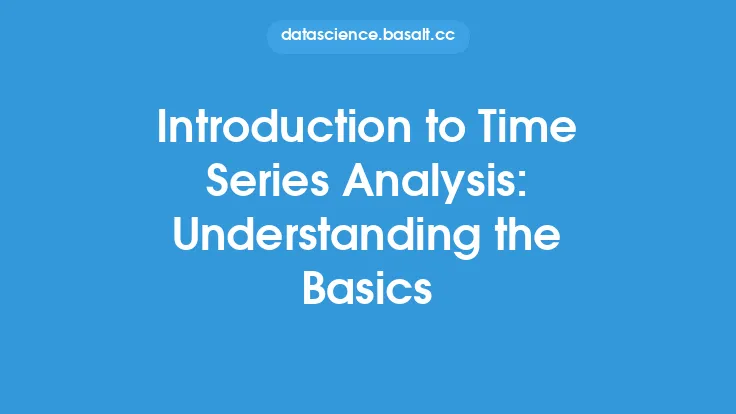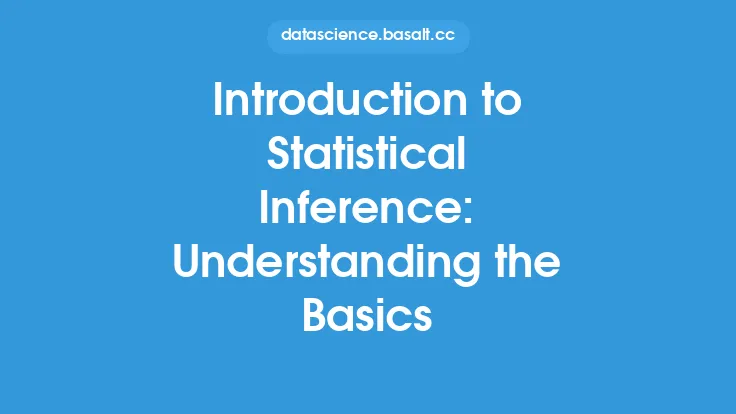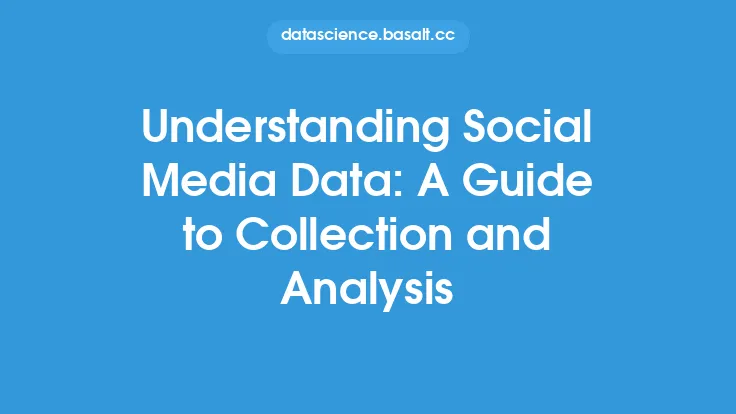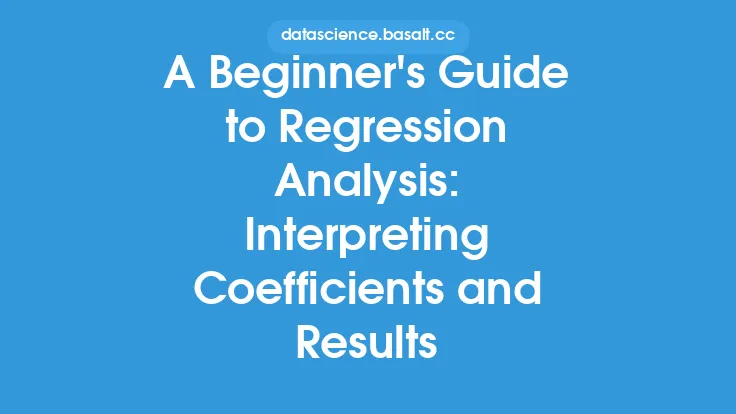Regression analysis is a fundamental concept in statistics, used to establish a relationship between two or more variables. It is a powerful tool for predicting the value of a continuous outcome variable based on one or more predictor variables. The goal of regression analysis is to create a mathematical model that can accurately predict the value of the outcome variable for a given set of predictor variables. In this article, we will delve into the basics of regression analysis, exploring its underlying principles, types, and applications.
What is Regression Analysis?
Regression analysis is a statistical method used to model the relationship between a dependent variable (also known as the outcome variable or response variable) and one or more independent variables (also known as predictor variables or explanatory variables). The dependent variable is the variable being predicted, while the independent variables are the variables used to make the prediction. The relationship between the variables is modeled using a mathematical equation, which is then used to make predictions.
Key Concepts in Regression Analysis
There are several key concepts in regression analysis that are essential to understanding the subject. These include:
- Variables: The variables used in regression analysis can be either continuous or categorical. Continuous variables are numerical variables that can take on any value within a given range, while categorical variables are variables that take on a limited number of distinct values.
- Coefficients: The coefficients in a regression equation represent the change in the dependent variable for a one-unit change in the independent variable, while holding all other independent variables constant.
- Intercept: The intercept in a regression equation represents the value of the dependent variable when all independent variables are equal to zero.
- Residuals: The residuals in a regression analysis represent the difference between the observed values of the dependent variable and the predicted values based on the regression equation.
Types of Regression Analysis
There are several types of regression analysis, each with its own strengths and weaknesses. These include:
- Simple Regression: Simple regression involves modeling the relationship between a single independent variable and a dependent variable.
- Multiple Regression: Multiple regression involves modeling the relationship between multiple independent variables and a dependent variable.
- Linear Regression: Linear regression involves modeling the relationship between the independent variables and the dependent variable using a linear equation.
- Non-Linear Regression: Non-linear regression involves modeling the relationship between the independent variables and the dependent variable using a non-linear equation.
Assumptions of Regression Analysis
Regression analysis relies on several assumptions, which must be met in order for the results to be valid. These assumptions include:
- Linearity: The relationship between the independent variables and the dependent variable should be linear.
- Independence: Each observation should be independent of the others.
- Homoscedasticity: The variance of the residuals should be constant across all levels of the independent variables.
- Normality: The residuals should be normally distributed.
- No Multicollinearity: The independent variables should not be highly correlated with each other.
Applications of Regression Analysis
Regression analysis has a wide range of applications in various fields, including:
- Business: Regression analysis is used in business to predict sales, revenue, and customer behavior.
- Economics: Regression analysis is used in economics to model the relationship between economic variables, such as GDP and inflation.
- Medicine: Regression analysis is used in medicine to model the relationship between disease outcomes and various predictor variables, such as age and treatment.
- Social Sciences: Regression analysis is used in social sciences to model the relationship between social variables, such as crime rates and socioeconomic factors.
Common Regression Metrics
There are several metrics used to evaluate the performance of a regression model. These include:
- Coefficient of Determination (R-Squared): R-squared measures the proportion of the variance in the dependent variable that is explained by the independent variables.
- Mean Squared Error (MSE): MSE measures the average squared difference between the observed and predicted values of the dependent variable.
- Mean Absolute Error (MAE): MAE measures the average absolute difference between the observed and predicted values of the dependent variable.
- Root Mean Squared Error (RMSE): RMSE measures the square root of the average squared difference between the observed and predicted values of the dependent variable.
Conclusion
Regression analysis is a powerful tool for modeling the relationship between variables and making predictions. It has a wide range of applications in various fields and is an essential skill for data analysts and statisticians. By understanding the basics of regression analysis, including the key concepts, types, and assumptions, practitioners can apply regression analysis to real-world problems and make informed decisions. Whether you are a student, researcher, or practitioner, regression analysis is an essential tool to have in your toolkit.





